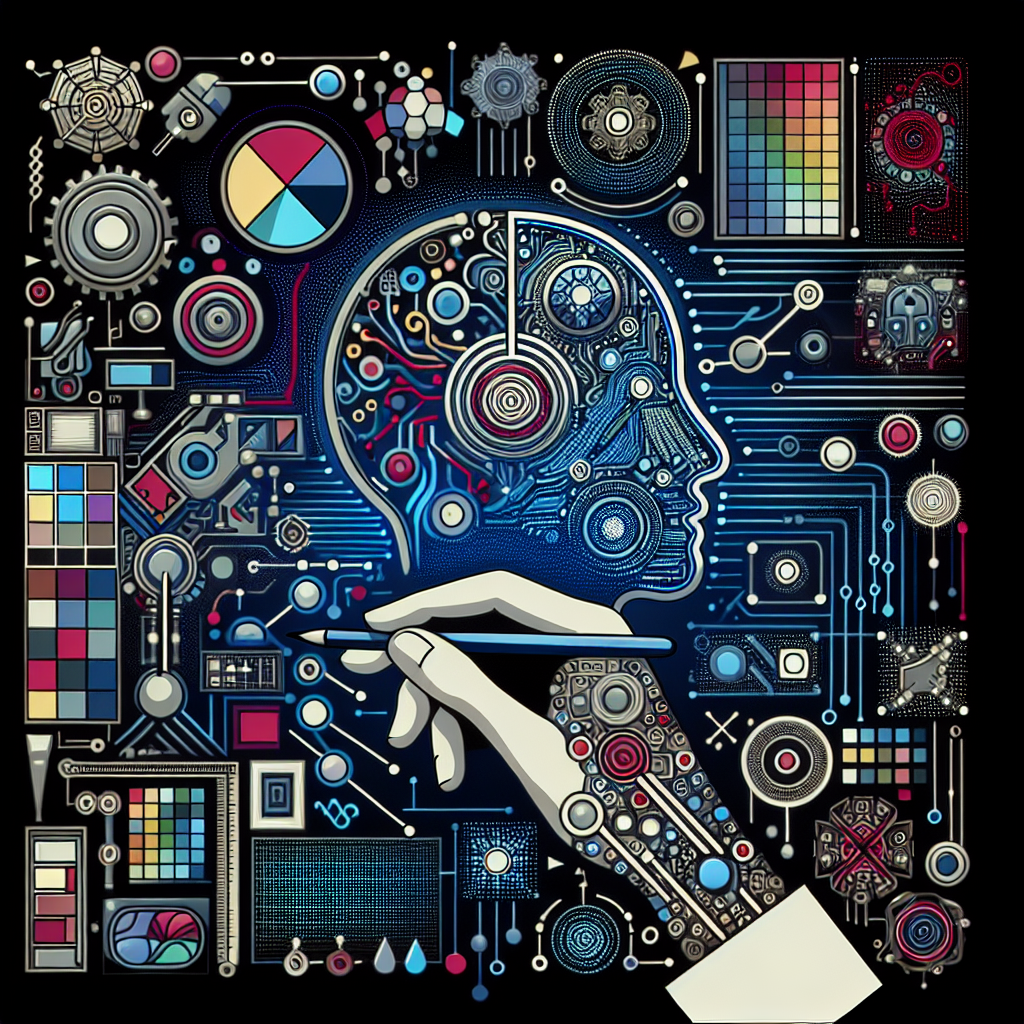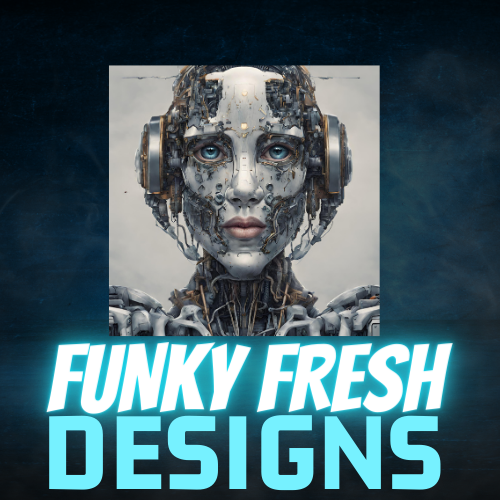Imagine a world where technology seamlessly blends with creativity, where your wildest design dreams come to life with the help of artificial intelligence (AI). With the power of Personalized Design by AI, you can now unlock a whole new realm of possibilities. This groundbreaking innovation takes your preferences, tastes, and style into account, enabling an intuitive and personalized design experience like never before. Say goodbye to generic templates and hello to a world where each design is tailored specifically for you. Embark on a journey where AI becomes your creative ally, allowing you to bring your unique vision to life in ways you never thought possible. Get ready to revolutionize the way you visualize and create with Personalized Design by AI.
Personalized Design by AI
Artificial intelligence (AI) has revolutionized numerous industries, and the field of design is no exception. AI’s ability to analyze data, learn from it, and make intelligent decisions has led to the development of personalized design solutions that cater to individual preferences. In this article, we will explore the role of AI in design, discuss how AI personalizes design, examine current applications, consider ethical considerations, delve into the future possibilities, and explore ways to incorporate AI into design processes. We will also showcase successful examples of AI personalized design and address the challenges and limitations faced in this emerging field.
1. Understanding AI in Design
1.1 What is AI?
Artificial intelligence refers to the development of computer systems that can perform tasks that typically require human intelligence. These systems are capable of learning, reasoning, problem-solving, and making decisions based on data and algorithms. AI combines various fields such as machine learning, natural language processing, and computer vision to simulate human intelligence and enhance efficiency in various domains.
1.2 Role of AI in Design
AI has opened up new possibilities in the field of design by automating tasks, analyzing data to gain insights, and creating personalized experiences for users. Designers can leverage AI to streamline their workflow, enhance creativity, and deliver tailored design solutions. From generating design recommendations to optimizing user interfaces, AI has become an invaluable tool for designers to enhance their work and improve user experiences.
1.3 Advantages of AI in Design
The integration of AI in design offers several advantages. Firstly, AI can process and analyze vast amounts of data at a speed that surpasses human capabilities. This allows designers to gain insights and patterns that might have otherwise been missed. Secondly, AI enables designers to create personalized experiences by understanding user preferences and adapting designs accordingly. Lastly, AI can automate repetitive tasks, freeing up designers’ time to focus on more strategic and creative aspects of their work.

2. How AI Personalizes Design
2.1 Machine Learning Algorithms
Machine learning algorithms form the backbone of AI-driven personalized design. These algorithms can learn from data and make predictions or decisions without being explicitly programmed. By analyzing large datasets, machine learning algorithms can identify patterns and trends that help designers understand user preferences. This information is then used to personalize design elements such as color schemes, layouts, and content to match individual tastes and desires.
2.2 User Preference Analysis
AI’s ability to analyze user preferences plays a crucial role in personalizing design. By tracking user behavior, AI algorithms can gather valuable insights into user demographics, interests, and engagement patterns. This information helps designers create design solutions that align with the target audience, leading to improved user satisfaction and increased conversion rates.
2.3 Real-time Adaptation
One of the key advantages of AI in personalized design is its ability to adapt in real-time. AI algorithms can continuously monitor user interactions and preferences, making instantaneous adjustments to design elements. This ensures that the design remains relevant and engaging, even as user preferences evolve. Real-time adaptation allows for dynamic user experiences that cater to individual needs and preferences.
3. Current Applications of Personalized Design by AI
3.1 E-commerce
AI-driven personalized design has found widespread application in the e-commerce industry. By analyzing user browsing habits, purchase history, and demographic data, AI algorithms can present product recommendations and personalized shopping experiences. This increases customer engagement, improves conversion rates, and enhances overall user satisfaction.
3.2 Marketing and Advertising
AI plays a vital role in personalized marketing and advertising campaigns. By understanding user preferences and behavior, AI algorithms can create targeted advertisements that resonate with individual consumers. Personalized design elements such as tailored messaging, visuals, and layouts can greatly enhance the effectiveness of marketing campaigns and improve customer engagement.
3.3 User Interfaces
User interface (UI) design has greatly benefitted from AI-driven personalization. By analyzing user interactions and preferences, AI algorithms can optimize the UI to provide a seamless and personalized user experience. From customized layouts to adaptive navigation menus, AI enhances user interfaces to match individual preferences and usage patterns.
3.4 Fashion Industry
The fashion industry has embraced AI-driven personalized design to provide tailored recommendations and customized shopping experiences. AI algorithms analyze user style preferences, body measurements, and fashion trends to generate personalized outfit suggestions and virtual fitting experiences. By understanding individual preferences, AI helps users discover fashion items that align with their unique taste and body shape.
3.5 Interior Design
AI has also made its mark in the field of interior design. By analyzing user preferences, AI algorithms can suggest personalized interior design solutions that align with individual tastes, lifestyles, and budgets. From furniture recommendations to color schemes, AI enables users to visualize and personalize their living spaces according to their unique preferences.

4. Ethical Considerations in AI-driven Design
While AI-driven personalized design offers significant benefits, ethical considerations must be taken into account.
4.1 Privacy Concerns
The collection of user data for AI analysis raises concerns about privacy. Designers must ensure that user data is collected and used ethically, with appropriate consent and protection measures in place. Transparency in data collection and user control over their data are essential to address privacy concerns.
4.2 Bias and Discrimination
AI algorithms are only as unbiased as the data they are trained on. Designers must be aware of potential biases in data and algorithms and work towards addressing them. It is crucial to ensure that personalized design by AI caters to diverse user groups and does not perpetuate discrimination or exclusion.
4.3 User Autonomy and Control
Personalized design by AI must strike a balance between personalization and user autonomy. Users should have control over the level of personalization and the ability to opt-out of personalized experiences if desired. Empowering users to customize their interactions with AI algorithms promotes trust and ensures ethical practices.
5. The Future of Personalized Design by AI
Personalized design by AI is poised for further advancements and innovation.
5.1 AI-generated Content
AI is increasingly capable of generating content, from written articles to visual designs. In the future, AI-generated content will become an integral part of personalized design, enabling designers to create customized experiences at scale. This opens up new possibilities for personalized marketing campaigns, user interfaces, and interactive storytelling.
5.2 Customizable AI Design Tools
Designers will have access to AI design tools that can be customized to align with their unique style and preferences. These tools will learn from designers’ past work and provide intelligent suggestions and enhancements, empowering designers to create personalized design solutions efficiently and effectively.
5.3 Collaborative AI Design
The future of personalized design will involve a close collaboration between designers and AI algorithms. Designers will work hand-in-hand with AI to ideate, iterate, and refine design solutions based on user preferences. This collaborative approach will bring together the best of human creativity and AI-driven personalization, resulting in enhanced user experiences.
6. Incorporating AI into Design Processes
To leverage the benefits of AI-driven personalized design, designers need to embrace AI technologies and enhance collaboration.
6.1 AI Technologies for Designers
Designers should familiarize themselves with AI technologies and tools that can streamline their workflows and enhance their creativity. From AI-powered design software to data analysis tools, incorporating AI into the design process can significantly enhance efficiency and innovation.
6.2 Enhancing Designer-AI Collaboration
Designers and AI algorithms should work in synergy to create personalized design solutions. Designers can provide the artistic direction and creativity, while AI algorithms analyze data and provide insights. The collaboration between designers and AI should be iterative, with continuous feedback and refinement to achieve the best design outcomes.
6.3 Maintaining Human Touch
While AI-driven personalized design offers several advantages, it is essential to maintain a human touch in the design process. Designers should strive to infuse their creative vision, empathy, and critical thinking into the designs, ensuring that the AI-driven personalization complements and enhances the user experience without compromising the artistic integrity and human connection.
7. Examples of Successful AI Personalized Design
Several successful examples illustrate the potential of AI-driven personalized design.
7.1 Spotify’s Discover Weekly
Spotify uses AI algorithms to analyze user listening habits and preferences, generating personalized playlists called “Discover Weekly.” By understanding individual musical tastes, Spotify provides users with a custom-curated playlist every week, introducing them to new artists and songs that align with their preferences.
7.2 Netflix’s Recommendation Algorithm
Netflix’s recommendation algorithm is a prime example of AI-driven personalized design. By analyzing user viewing history, ratings, and preferences, Netflix suggests personalized movie and TV show recommendations. This enhances user engagement and retention, as users discover content tailored to their individual tastes.
7.3 Amazon’s Product Recommendations
Amazon’s personalized product recommendation system leverages AI algorithms to analyze user browsing and purchasing history. By understanding individual preferences and behaviors, Amazon suggests relevant products, ultimately increasing sales and customer satisfaction.
8. Challenges and Limitations of AI Personalized Design
Despite its potential, AI-driven personalized design faces several challenges and limitations.
8.1 Data Accessibility
To personalize designs effectively, AI algorithms require access to vast amounts of high-quality data. However, data accessibility and availability can be a challenge, especially for smaller businesses or industries with limited datasets. Addressing this limitation requires collaboration, data sharing, and innovative data collection methods.
8.2 Overreliance on Algorithms
While AI algorithms can provide valuable insights and enhance design personalization, overreliance on algorithms can limit creativity and critical thinking. Designers must strike a balance between leveraging AI technology and maintaining their artistic integrity, ensuring that the human element remains at the forefront of the design process.
8.3 Unique User Preferences
AI-driven personalized design challenges the notion of a homogeneous user experience. Designers must consider the unique preferences and needs of individual users rather than relying solely on aggregated data. This demands a more nuanced understanding of user preferences and the ability to strike a balance between personalization and broader design principles.
10. Conclusion
AI has revolutionized the field of design, enabling personalized design solutions that cater to individual preferences. By leveraging machine learning algorithms, analyzing user preferences, and adapting in real-time, AI offers significant advantages in various industries such as e-commerce, marketing, and fashion. However, ethical considerations, future possibilities, and challenges of AI-driven design must be carefully navigated. By incorporating AI into design processes, enhancing collaboration, and maintaining a human touch, designers can harness the power of AI to create personalized design experiences that captivate and delight users. As AI technology continues to evolve, the future of personalized design holds immense potential for innovation and enhanced user experiences.
